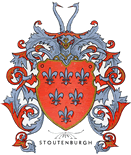
An articled entitled “Call Themselves the Anneke Jans’s Heirs” published in The New York Times March 18, 1896 (as published in the Chicago Chronicle March 13) details the formation of a group which laid claim to millions of dollars in interest to the Trinity Church property. These vicinities, along with a parcel of “Peter Stoutenberg” are detailed on a map of land use in 1610-1664 Manhattan on page 31 of The Historical Atlas of New York City by Eric Homberger, Henry Holt & Company, NYC, 1998.

Two years later this group aspired to international endeavors by laying claim to a legacy alleged to be worth billions of dollars. A Pacific Coast Association was formed in addition to the International Union of Heirs of Anneke Jans Bogardus. Descent from William the Silent, Prince of Orange (Johann Van Oldenbarneveldt’s contemporary) was claimed and a resolution was made to send a committee to Holland to “look after” the heirs interests there. Chapters of Anneke Jans Bogardus Heirs Association raised funds to back their legal efforts.
The Will of Anneke Jans, widow of Roeloff Janse and Everhardus Bogardus, was made January 29, 1663 and is printed in Abstract of Wills volume 28, pp. 487-90.
Lawsuits failed to produce and lack of proof brought no success to these endeavors, however as recently as 1996 efforts continued, and the subject provides interesting reading. Further research, which colors outside the lines of the Stoutenburgh sagas, seems to parallel our history and enrich our understanding of the history of the residents during this period.
I seek documents and old maps relating to the early days of Manhattan to add to our magnificent collection.
Ila Malloy
